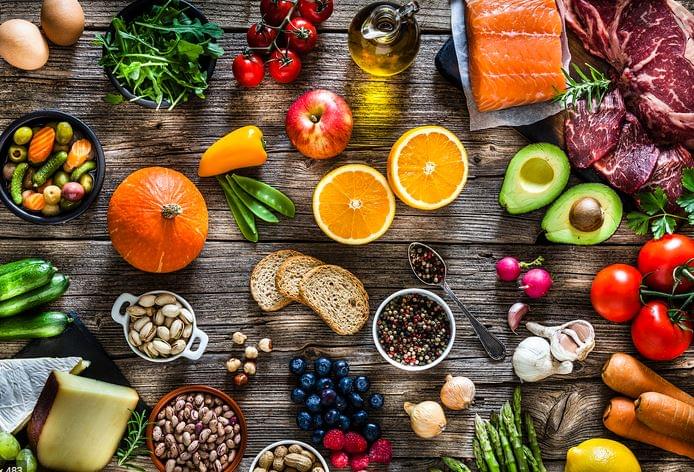Healthy eating in restaurants
A recommendation has been made for restaurants to consider healthy eating based on a professional study by the Hungarian Scientific Association for Harm Reduction and Environmental Diseases. Well, as they say: every joke is new to a newborn!

Well, the following list is not meant to make fun of the caterers: there are things that cannot be said enough!
1. Hungarian dishes and fried foods fried in plenty of fat, bacon-studded meats stuffed with sausages, fried loops, sausages have a very high fat and energy content. That is why the basis of the dishes should not be bacon and the fat melted from it, but vegetable oils (olive oil, rapeseed or linseed oil), and instead of deep-frying, it is recommended to choose from the following preparation methods: grilling, steaming, baking in a steam oven, using aluminum foil or an oven bag, Roman Use of /clay/pots/heat-resistant pots, sous vide technology.
2. The optimal baking temperature is 160-175 °C, at higher temperatures the fat is damaged and substances harmful to health are produced. The risk can be reduced if cooking is done at a lower temperature for a longer time.
3. During the grilling, roasting, and smoking of food, chemical substances can be produced that promote the development of cancerous diseases. That’s why you should never over-bake or over-roast roasts!
4. When choosing ingredients, use fresh vegetables and fruits instead of quick-frozen and canned ingredients. Where possible, goods purchased from a local, domestic producer with a short supply chain. Instead of fried potatoes and rice, offer a large portion of vegetables as a side dish in the form of boiled, steamed, grilled, pickled or salad instead of dishes made from fattier pork (e.g. shanks, flanks) and beef, duck, roast goose and fried meat.
5. There should also be plenty of vegetables and salads for decorating the plates.
6. Offer cooked or steamed dishes made from cereals and pseudo-cereals as a side dish.
7. The raw material of pasta should be whole grains.
8. Offer several kinds of fish on the menu (e.g., among the Hungarian fishes, pike, trout, catfish), but not deep-fried!
9. Food should not be oversalted, only salt with a reduced sodium content should be placed on the tables. The use of excessive salt when preparing food can be replaced with green spices (e.g. parsley).
10. Use pickling instead of strong seasoning.
11. The bread placed on the tables should be whole grain, bran, graham or brown bread.
12. When preparing soups, pay attention to the low fat content, these dishes should also be prepared with a lot of vegetables.
13. Vegetables and cream soups should be thickened by pureeing or thickening the raw material with its own material instead of stir-frying.
14. Cake dough can also be made from whole wheat flour. Instead of creamy, buttery, sweet creams, use fruits, low-fat dairy products or alternative milks. Desserts made with natural sweeteners (erythritol, maltitol, stevia) should also be included in the offer, and the use of artificial sweeteners should be avoided. Instead of canned fruit salad and to replace cakes, include fresh fruits or salads made from them on the menu.
15. It is possible to choose smaller portions of food.
16. Vegetarian and “free” dishes should also be prepared, but they should not be dominated by frying in plenty of fat. It is recommended to familiarize consumers with new or gluten-free, dairy-free ingredients (e.g. quinoa, millet, buckwheat, coconut milk soups, tapioca pudding, etc.)
17. Place water and unflavored fruit teas on the tables, where possible. Carbonated soft drinks should also be sugar-free, but they should also offer freshly squeezed or fibrous fruit and vegetable juices instead.
18. As alcohol, recommend good quality red or white wine instead of spirits and beers.
19. It is recommended to inform consumers about allergens in food and the nutritional content of food in writing, on the menu or on food cards. It is also necessary to tell the guests that if there is no separate kitchen area designed for the preparation of food free of allergens, then in case of sensitivity, they should eat at their own risk due to the risk of cross-contamination.
20. It is important that only food made from safe and high-quality raw materials, prepared under suitable food safety conditions and tasty foods support a healthy diet. The beautiful presentation of food, the cultured circumstances of eating it, and the appropriate meal time make eating an experience and have a stress-reducing effect.
Related news
Dm focuses on women’s health and the female cycle – The dm health bus will be back on the road in May
Dm is constantly looking to provide new impulses for a…
Read more >Health in everyday life
A healthy lifestyle means different things to different people, and…
Read more >Együtt hajóztunk (2. rész)
Szeptember 25–29. között Tapolcán, a Hotel Pelionban gyűlt össze a…
Read more >Related news
A new chef is working at the head of Arany Kaviár
In the person of Bence Molnár, a young, outstandingly talented,…
Read more >(HU) Asztelnemű kempingezéshez, hajózáshoz, űrhajózáshoz – A nap videója
Sorry, this entry is only available in HU.
Read more >(HU) Amikor az Úr áldását adja a pizzarendelésre – A nap képe
Sorry, this entry is only available in HU.
Read more >







